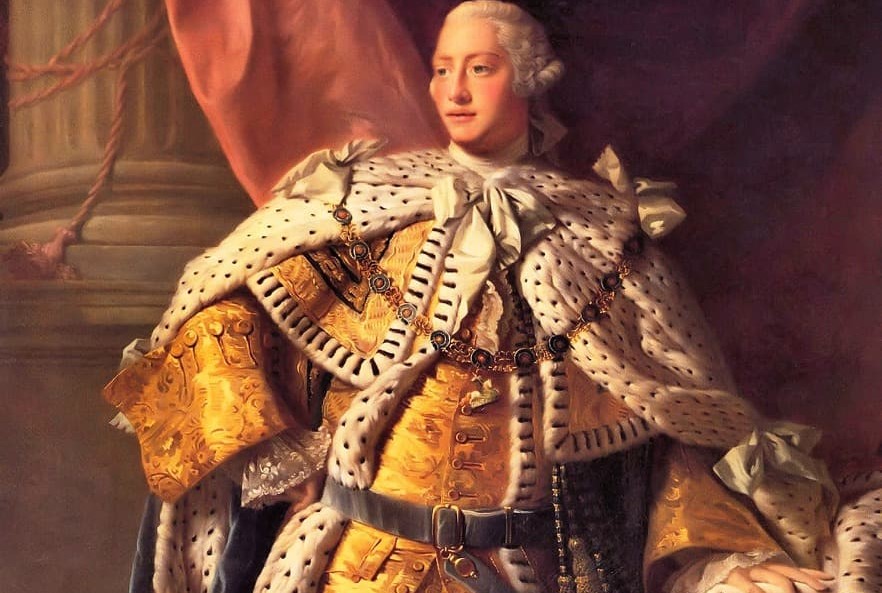
Born George William Frederick in London in 1738, King George III was the King of Great Britain and Ireland from 1760 and King of Hanover from 1814 until his death in 1820. He lived and ruled longer than any other English or British king and this year marks the 200th anniversary since the end of his record-breaking reign.
While George III’s reputation as “the mad king who lost America” prevails, he was a committed and conscientious leader who provided background stability in a thriving Britain undergoing industrialisation. He also oversaw the reform of gold coinage, which was no mean feat, and few people have acknowledged his valuable contribution to numismatics as we know it.
The most misunderstood monarch?…
Considerable controversy impacted George III’s long-lasting reign. In 1776 he was deemed ‘unfit to be the ruler of a free people’ by the American Declaration of Independence and is unfortunately remembered for losing the American colonies, and later, his sanity.
However, recent historians defend the long-serving monarch and argue his behaviour was significantly less ruthless than contemporary European monarchs. In the context of the time, no king would voluntarily relinquish such a large territory. Prince Charles has also publicly shown his support for King George III and named him his most-respected monarch, highlighting him as “a good man who was simply misunderstood”.
Under George III, the British agricultural revolution reached peak success and there were rapid advancements in the scientific and industrial fields, ushering in the era of “Enlightenment”. He was the first king to study science – he had his own astronomical observatory – and his mathematical and scientific instruments are now housed in the Science Museum, London. To reel off yet another achievement: he also won the Seven Years’ War and Napoleonic Wars.
The reform of gold coinage
Following the financial turmoil that accompanied the Napoleonic Wars, George III made the decision to reform gold coinage. He decided the sovereign would replace the guinea, with a value of exactly one pound and it would be complemented by a half sovereign.
This means King George III’s reign was the only one in which both sovereigns and guineas circulated – two of the world’s best-known and loved gold coins.
The new sovereign was the first modern coin of its kind, and it was only struck between 1817 and 1820. It featured a portrait of George III on one side and a depiction of St George slaying the dragon by the great Italian designer Benedetto Pistrucci on the reverse, which has become synonymous with British gold coinage. This coin is one of the twelve most important sovereigns because it’s the first of its king and the only sovereign to feature this rendition.
The 2020 George III 200th Anniversary Heritage Gold Sovereign Range
To commemorate the 200th anniversary of King George III’s remarkable reign and honour his contribution to coinage history, Hattons of London has commissioned an exceptional range of gold sovereigns. They are world’s first sovereign coins to include authentic gold from the reign of George III.
The quarter sovereign features the design of one of the most important coins from King George III’s time – the quarter guinea. Created using pure gold circulated 200 years ago, it includes the elaborate Royal Arms pattern in circulation in 1762.
Also featured in the range is the £50 sovereign, with a highly limited mintage of just 22 – bringing to life the world-renowned St George and the Dragon depiction first engraved two centuries ago.
The new collection starts with the quarter sovereign, with a limited mintage of 3,999. You can buy yours here.


